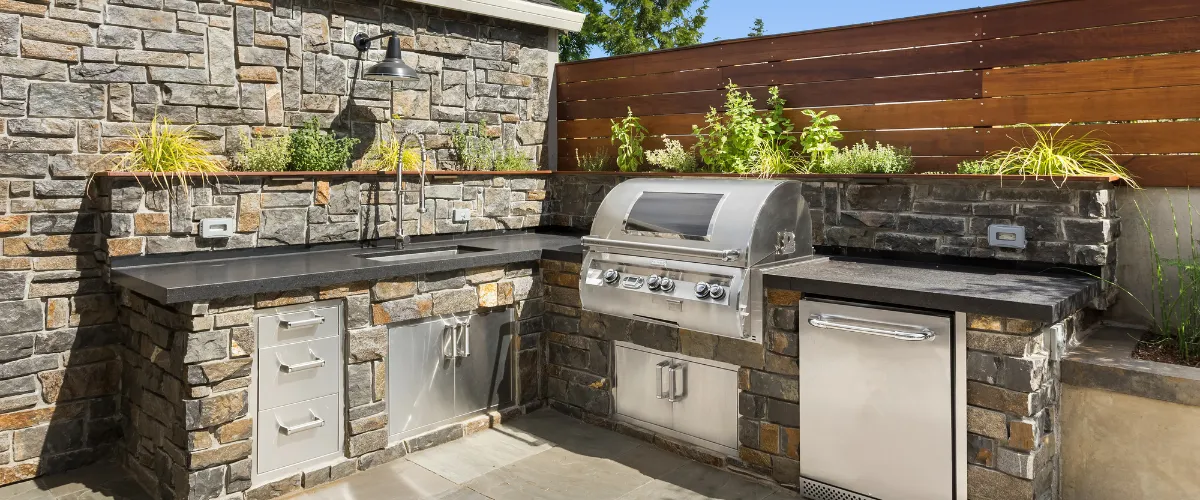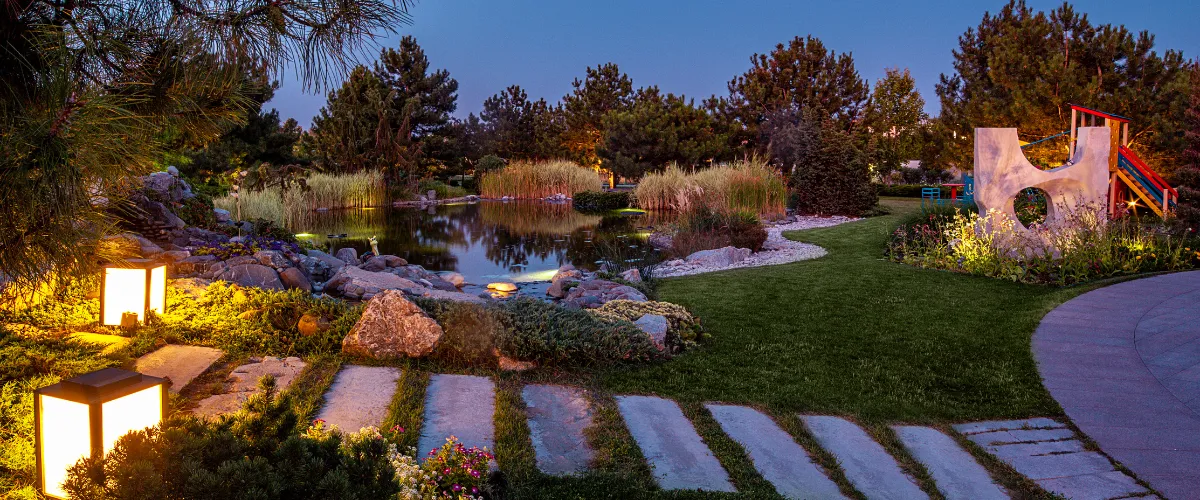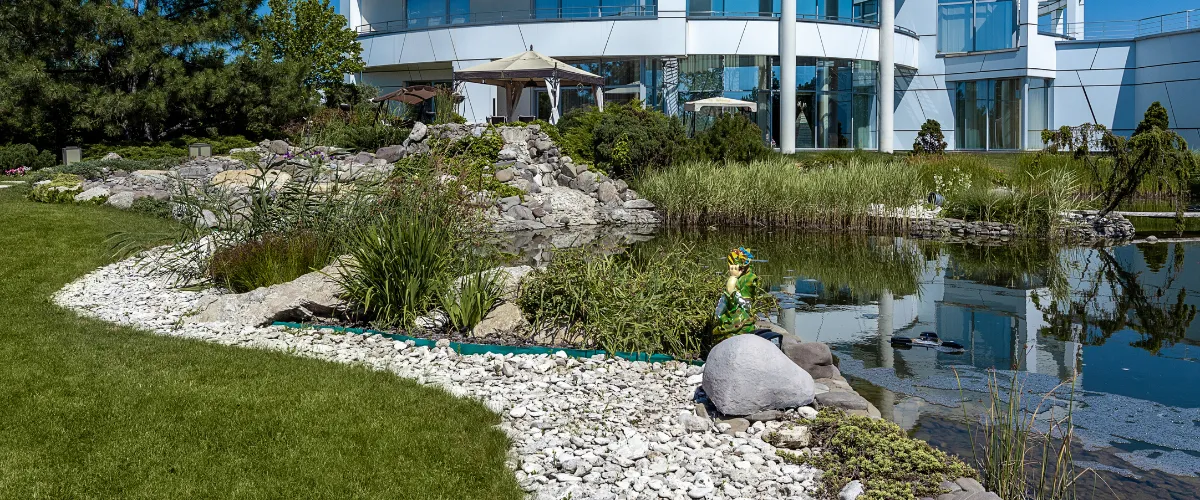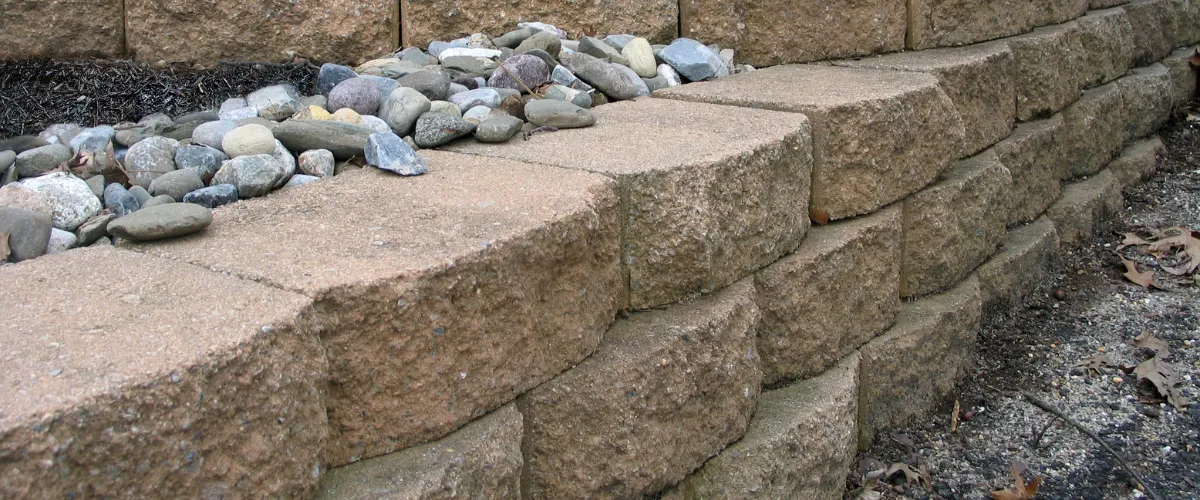Hardscaping Vs Softscaping in Landscape Design
When designing an outdoor space, many homeowners struggle to choose between hardscaping and softscaping. The truth is, both are essential to creating a well-rounded landscape.
In this guide, we’ll explore the key differences between hardscaping and softscaping, showing how these elements complement each other to bring your outdoor design vision to life.

Defining Hardscaping and Softscaping
Key Characteristics of Hardscaping
Hardscaping involves the non-living elements of landscape design. This includes things like patios, retaining walls, and walkways made from concrete, brick, stone, and metal. These hardscape features create structure in outdoor living spaces.
They often serve practical purposes too, such as improving drainage or defining different areas of a garden.
Softscapes are all about the living parts of a landscape. Plants, trees, shrubs, and grass fall under this category. Unlike hardscaping elements that stay the same over time, softscape elements grow and change with seasons.
They add color, texture, and life to outdoor spaces and are key in making hard structures blend with nature.
Hardscape structures bring function while softscapes bring life.
Key Characteristics of Softscaping
Softscaping brings life to any landscape design and includes all the living parts of a garden such as plants, flowers, trees, and grass.
These elements add color, texture, and aroma to your outdoor space. Unlike hardscape landscaping that uses hard materials like stone or concrete, softscape relies on soil and organic matter.
Softscaping changes with seasons offering a dynamic beauty to landscapes. It requires regular maintenance like watering, pruning, and fertilization to stay healthy and attractive.
Through careful selection of plants suited to the local climate and soil conditions, softscaping can create a natural habitat for wildlife while adding beauty to the environment.

The Role of Hardscaping in Landscape Design
Creating Functional Spaces
Hardscape elements play a big role in making outdoor areas useful. Paths, patios, and decks let people walk, sit, and enjoy their gardens without getting muddy. These parts also define spaces in the garden for different uses.
For example, a paved area can be perfect for dining outdoors while gravel paths make it easy to walk around.
Hardscaping turns any yard into a living space.
With fences and walls, hardscaping helps create private spots in a garden. Lighting along pathways and steps makes the outdoor space safe to use at night. Every stone wall or wooden arbor has a job: to make the garden not just pretty but also practical for everyday life.
Enhancing Aesthetics with Structural Elements
Structural components in landscape design contribute significantly in enhancing the visual attractiveness of spaces. Elements like walkways, patios, and stone walls contribute to the aesthetic appeal while structuring the outdoor space.
These firm elements integrate with softer features such as plants and trees to generate visually striking scenes.
Selecting appropriate materials is crucial in bestowing style to a garden or yard. For instance, employing natural stone can impart a luxurious allure blending well with vegetation.
Illumination on pathways enhances safety during nighttime while also accentuating these elements beautifully.
The Importance of Softscaping
Providing Ecological Benefits

Plants and trees in softscape elements work hard for the environment. They create oxygen and remove harmful substances from the air. This makes our surroundings cleaner and healthier to live in.
Softscaping also helps keep the ground in place, reducing erosion caused by wind or water.
Softscapes play a big role in supporting wildlife too. They offer food and shelter to many animals, insects, and birds. By choosing local plants for your garden, you help maintain the area’s natural balance.
Softening Architectural Lines with Natural Elements
Trees and shrubs help to diffuse the harsh lines of buildings, contributing to an ambiance that’s inviting. Softscapes, such as gardens, introduce vivid hues and varying textures amidst rigid structures.
They bridge the gap between hardscape elements and natural background.
Ground covers and vines are effective at concealing less attractive sections of hardscape elements. These plants facilitate the integration of these regions with the adjacent landscape.
This strategy is aesthetically pleasing and helps to connect individuals with the natural world.

Balancing Hardscaping and Softscaping
Techniques for Harmonizing Hard and Soft Elements
Balancing robust and gentle components in landscape design creates more inviting and practical spaces. Here are some strategies to effectively merge hardscape and softscape elements:
Make smart color choices. Select hardscape materials that tie in with or enhance the hues in your softscape. Grey stone, for instance, can blend well with blue and purple florals.
Maintain equilibrium.
Develop a layout where hardscape and softscape do not outbalance each other. A decent combination could be a paved area for relaxation encircled by a plethora of plants.
Echo shapes and lines. If your patio features curved boundaries, try introducing flower beds or bushes with equivalent curves.
Connect spaces. Utilize gentle components like ground cover or dwarf plants to merge pathways with the remaining garden.
Opt for environment-friendly materials. Natural stone is a versatile option for multiple settings, yet brick could be a more fitting choice for your place if it’s of a more classic architecture.
Experiment with textures. Pairing coarse with sleek textures can be intriguing. Sleek paving stones can provide an appealing contrast against a background of fluffy grasses.
Anticipate expansion. Acknowledge that plants tend to grow.
Incorporate lighting to emphasize both types of elements during nighttime. Positioning lights along walkways or focusing on particular plants can establish a stunning nocturnal landscape.
By adhering to these guidelines, a landscape that seamlessly fuses hardscape and softscape elements can be achieved, hence making outdoor spaces attractive and pleasurable throughout the year.
